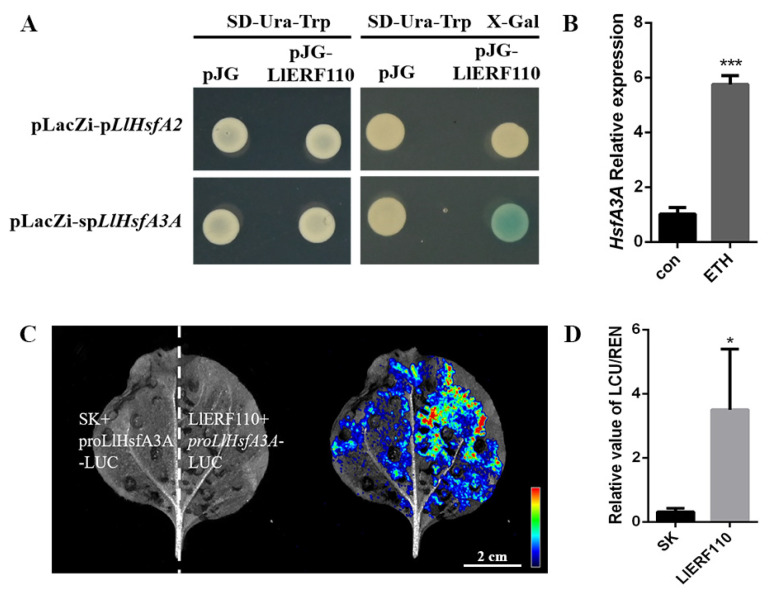Figure 7.
LlERF110 binds to the promoter of LlHsfA3A and activates its transactivation activity. (A) The bait (pLacZi-pLlHsfA2 or spLlHsfA3A) and prey (pJG or pJG-LlERF110) constructs were cotransformed into the yeast strain Y187. The baits transformed with the prey pJG were used as negative control. Interaction between bait and prey was determined by cell growth on SD/-Ura-Trp containing X-Gal. (B) Relative expression of LlHsfA3A in lily leaves after exogenous 2 ppm ETH treatment measured using qRT-PCR. (C) The dual-luciferase reporter assay was used to detect the interaction between LlERF110 and the LlHsfA3A promoter in N. benthamiana leaves. A 1020-bp fragment of LlHsfA3A promoter was used in this assay. Empty vector pGreenII 62-SK (SK) and ProLlHsfA3A:LUC was used as negative control. Suspensions of A. tumefaciens contained different vectors that were mixed and infiltrated into N. benthamiana leaves, and LUC signals were detected 72 h after infiltration. Bar: 2 cm. (D) The ratio of LUC/REN of the empty vector (SK) co-transformed with the proLlHsfA3A-LUC vector was used as the calibrator (set as 1). Three independent experiments were performed. T-test analysis of variance was employed to identify treatment means that differed statistically. Samples with different stars are significantly different; * p < 0.05, and *** p < 0.001.

